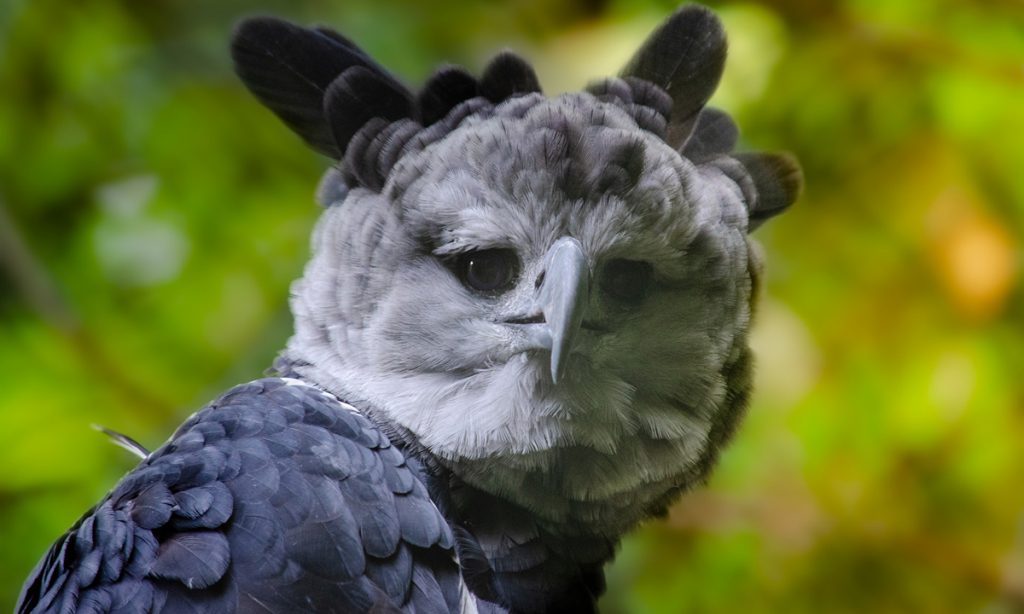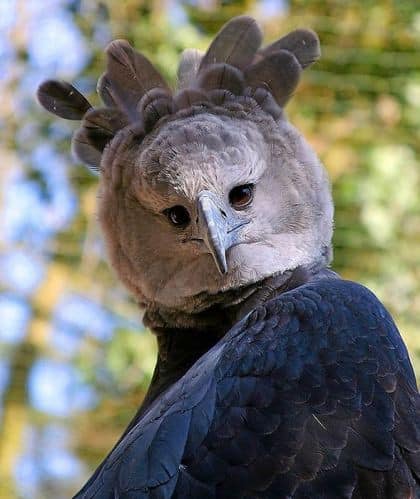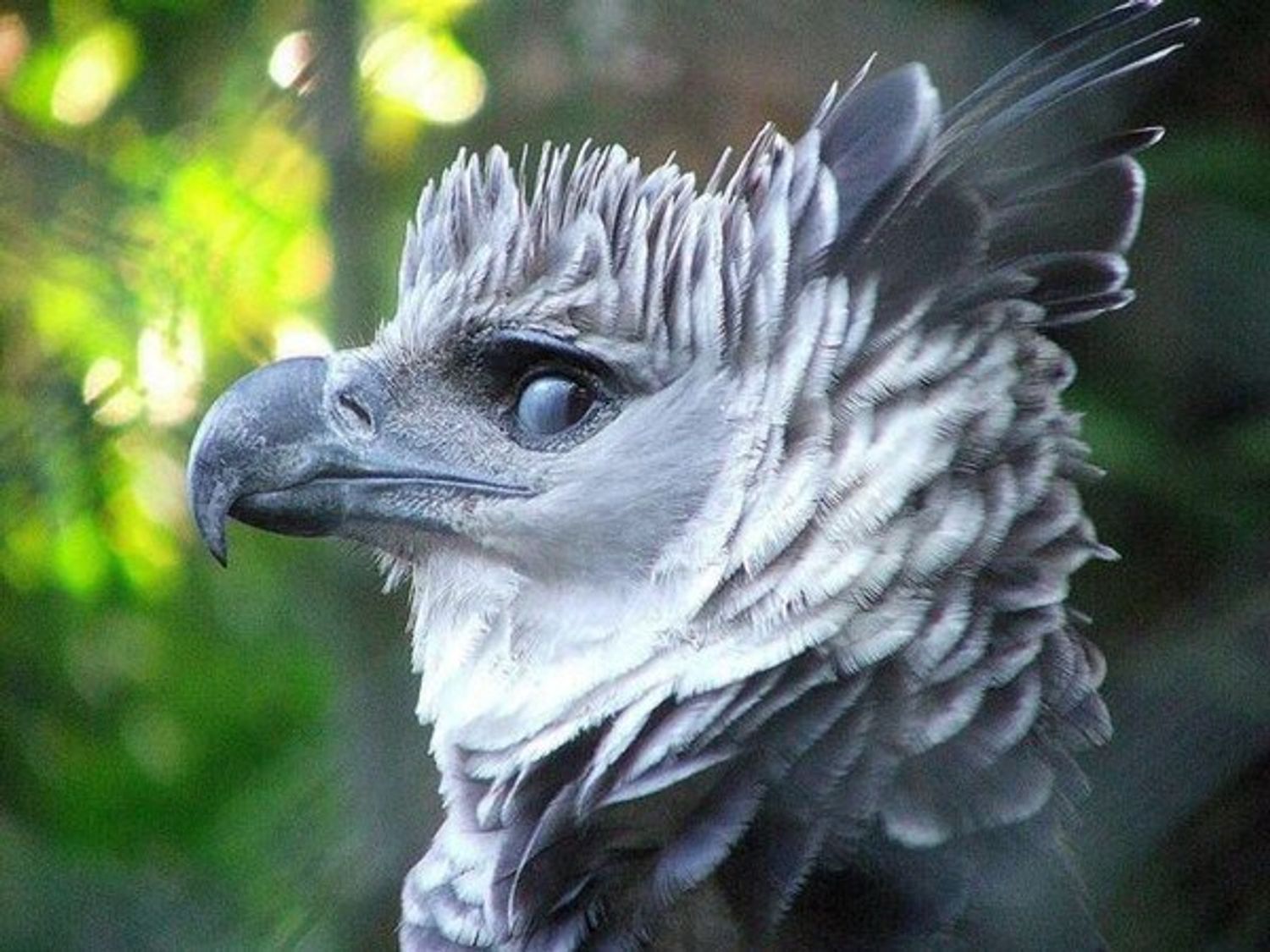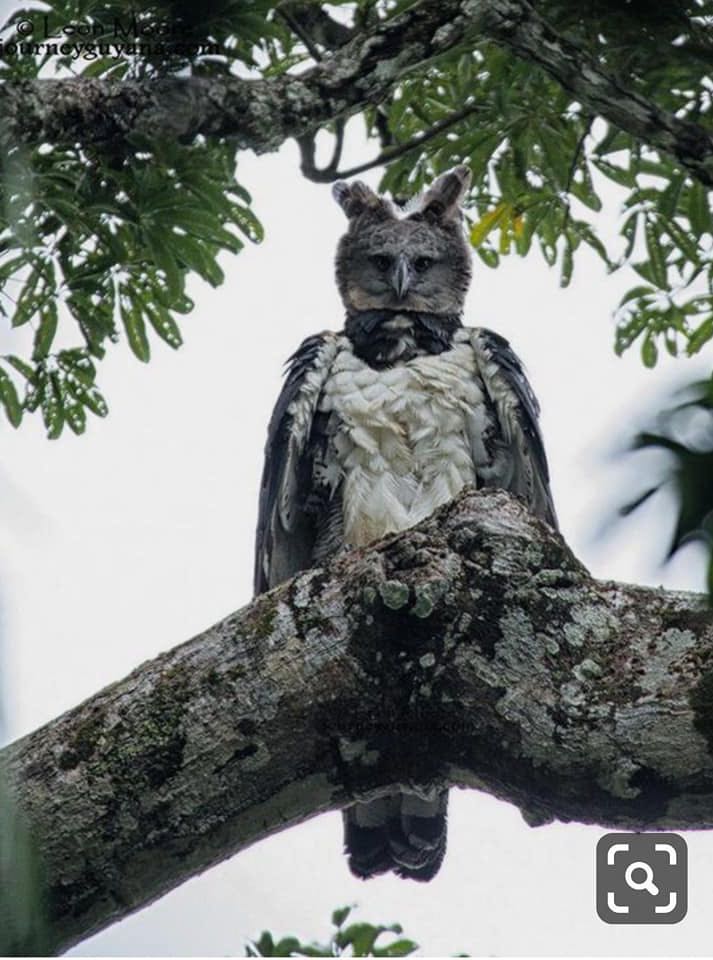The harpy eagle is legendary, although few people have seen one in the wild.
Why are harpy eagles so cool? For one, they are the largest eagle in the Americas and are considered the most powerful bird of prey in the entire world. With tarsal claws 5 inches long and a wingspan of up to six and a half feet, these beautiful and formidable predators make quick meals out of monkeys and sloths.
Early South American explorers named these great birds after harpies, the predatory “frightful, flying creatures with hooked beak and claws” of Greek mythology. It turns out that was a great name for them, as they appear to be mythological creatures themselves!
We wanted to share some interesting facts about these little known birds of prey:

1. Juvenile Harpy Eagles have a different appearance. They have a whitish to gray color throughout the body. Upper parts of the body are usually brownish-gray in color while the crest is whitish. Tails of juveniles do have the dark bars on the top. However, by the time juveniles become 4 years of age, their colors become darker and the plumage takes the appearance as described above (see #12 to #18).
2. The call of a Harpy Eagle is described as wheeeoooooo or just wheeeeeeeeee. It is a penetrative and plaintive scream. The scream is repeated several times during a single call.
3. Harpy Eagles are fully carnivores. Their major diet source comes from arboreal mammals like the sloths and the monkeys. However, they are also known to capture land animals like peccaries, deer, armadillos, foxes and agoutis.
4. If necessary, they don’t mind feeding on reptiles and birds. Their commonest preys in this category include reptiles like iguanas and snakes and birds like curassows and macaws.
5. Harpy Eagles use a particular type of hunting style. They will first take up a position on a perch and watch for potential prey. In case they can’t get anything within their visual range, they will make use of their excellent hearing, which is aided by the disc-like facial construction. Once the prey is located, they will fly through the forest trees with extreme agility and speed and snatch the prey even before the prey realizes that it is in trouble.

6. Since male Harpy Eagles are smaller in size, they usually go for smaller preys but females take advantage of their size and can grab larger preys with ease. Once a prey is captured, a Harpy will usually carry it to a tree top and enjoy the fresh meat. However, if the prey is heavy, a Harpy will usually drag it to a fallen tree trunk and then eat it.
7. Both female and male Harpy Eagles work together towards constructing a nest which is usually located on tall trees. Mostly they select a Kapok tree. The nest is usually pretty large platform made of sticks. The nest is usually 4.9 feet across and 3.9 feet deep. However, they do decorate their nests a bit by lining the next borders with green leaves.
8. Once a male and a female Harpy mates, the female lays just two eggs which are dull white in color. The female then incubates the eggs for a period of 56 days before the chicks are born. Usually, only one of the two chicks survive. The female remains in charge of raising the chick(s).
9. When the female incubates the eggs and later raises the chick(s), it is the job of the male to ensure a steady food supply is maintained for the mother and the babies. The male will usually bring food every two to three days.
10. At the age of 4.5 months to 6 months, the young Harpy Eagles fledge but they don’t go far and stay close to the nest. They usually stay dependent on their parents for food supply for next 8 to 12 months after which they grown big enough to go out on hunting expeditions and arrange for their own meals. However, they may not succeed and hence, they stay close to their nests until they grow 2 years old.
harpy eagle
11. Since the juveniles stay dependent on their parents for up to 2 years, the adults usually mate only once every 2 to 3 years. They usually mate anywhere between April and November but they can mate anytime during the year.
12. Harpy Eagles are usually found in subtropical and tropical evergreen forests. That are below 900 meters of elevation above sea level. However, they can occasionally live in forests that lie at elevation of 2,000 meters. This is possible because they are very capable of adaptation to habitat disturbance. If there are forest patches and sufficient food supply, they are happy to stay.
13. Though Harpy Eagles are massive, they are barely seen flying in open air. They usually glide through forest canopy and very rarely they fly above the canopy.
14. They are monogamous by nature. Simply put, they will usually keep only one breeding partner for their lifetime. They may fly alone or they may fly in pairs.
15. Harpy Eagles are very rare throughout their range. They are found from Mexico to Central America and into South America, all the way down to Argentina. In Mexico, they are almost extinct. They are however spread across the length and breadth of Brazil.

16. In Central America, Harpy Eagle is almost extinct except in certain areas in Panama where Harpy Eagle is a national bird. Deforestation is the primary culprit for near extinction of Harpy in Central America.
17. A breeding pair of Harpies occupy an area as large as 11,000 acres or 44.5 square kilometers with the average distance between two nests of two separate breeding pairs being 7.4 kilometers. However, this is usually under ideal conditions. In less ideal conditions, their territories squeeze down severely to 25 square kilometers.
18. In the wild, Harpy Eagles can survive anywhere between 25 years and 35 years. They can live longer in captivity.
19. Harpies are diurnal by nature. This means that they hunt and stay active during the day. By day fall, they return to their nests and rest.

20. Rapid habitat loss due to deforestation has led to significant drop in Harpies. In many areas they are thought to be locally extinct. They also become victims of human hunting games, which is also a major contributory factor for their rapid decline in number. As of today, Harpies are designated as Near Threatened species.
Keep Reading: Bald Eagle Rescued From The Grip Of An Octopus In Extremely Rare Sighting

